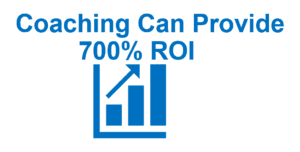LEADERSHIP CONNECT TOOLKIT
Connect the Dots Consulting, we are committed to providing practical and timely leadership coaching and development. At a time when leaders are stretched to the limit, we want to share a Toolkit for effectively leading and connecting with your teams.
ToolKit: The Business Case for Coaching
There are several ways to provide your leaders with coaching that help them understand what skills and behaviors they need to leverage and those that they need to further hone.
 There have been countless articles, videos and blog posts about the leadership skills that are critical for leaders to exhibit while navigating the dynamics of the pandemic. While in large part we all agree that these skills are critical, there hasn’t been a lot of conversation about how to quickly equip leaders to be successful.
There have been countless articles, videos and blog posts about the leadership skills that are critical for leaders to exhibit while navigating the dynamics of the pandemic. While in large part we all agree that these skills are critical, there hasn’t been a lot of conversation about how to quickly equip leaders to be successful.
Many leaders have done an amazing job stepping up and into the new expectations and needs that their organizations and teams have of them—some using pure instinct and others drawing on a leadership foundation that they had previously built.
Now is an important time for HR and OD leaders to ensure that their organizations have a purposeful strategy to provide current and high-potential leaders with targeted development support. As we explain in our video, When Coaching is the Right Decision, coaching continues to be a proven strategy with a real return on the investment.
Here are 3 strategies to integrate coaching into your development strategy:
Leader as Coach: “I don’t have time” has historically been many leaders’ response to the need to provide coaching to their team members. Korn Ferry conducted a study to find out how much time a leader really needs to devote to coaching and found that it doesn’t take nearly as much time as most leaders expect. Devoting just 10% of a leader’s time with their teams to coaching yields an impressive ROI. It is critical for leaders to prioritize time for each of their team members to discuss their career objectives, provide feedback, and craft a development plan.
Internal Coaching: Having a core set of internal coaching resources can be invaluable. Internal coaching plays a critical role in both surfacing and supporting the development needs. Internal coaches, of course, have the “inside track” knowledge of what it takes to be successful and how to navigate the culture. Leaders often rely on internal resources to address specific skill development, support 360 feedback, and create leadership development programs.
External Coaching: Leveraging the expertise of external coaches for targeted coaching opportunities is an investment that has proven to pay off. The International Coaching Federation surveys indicate an organization sees an average of $7 return on every dollar invested in coaching. Opportunities include onboarding executive new hires and providing executive level leaders with an objective thought and accountability partner. Of course, it is critical that executive coaching firms are aligned with the needs and culture of the organization and integrate progress metrics that enable the HR and executive leadership to understand the benfits and return on their investment.

The resource that we sent out earlier this month, Today’s Leadership Success Profile, includes an assessment that may provide you with a good starting point for identifying the needs of your leaders and how coaching can be positioned as an effective tool to bridge gaps.
We would appreciate hearing from you about which strategies are working or not working in our evolving workplaces. Please drop us a note, follow us on LinkedIn and Twitter, or check out our website.
We start with thoughtfully diagnosing the team’s current culture by using available data, assessments and interviews.
This provides the team leader with a clear view of what is getting in the way of the team’s success.
We design a series of structured team sessions that:
Measure progress by leveraging CTD’s team-connect Survey to: